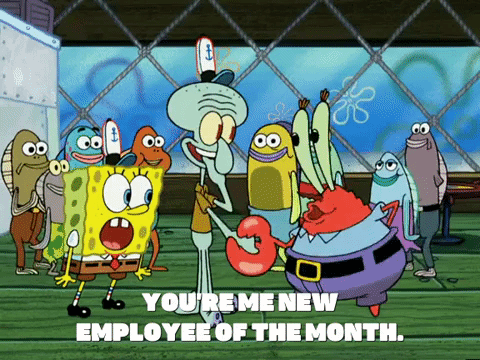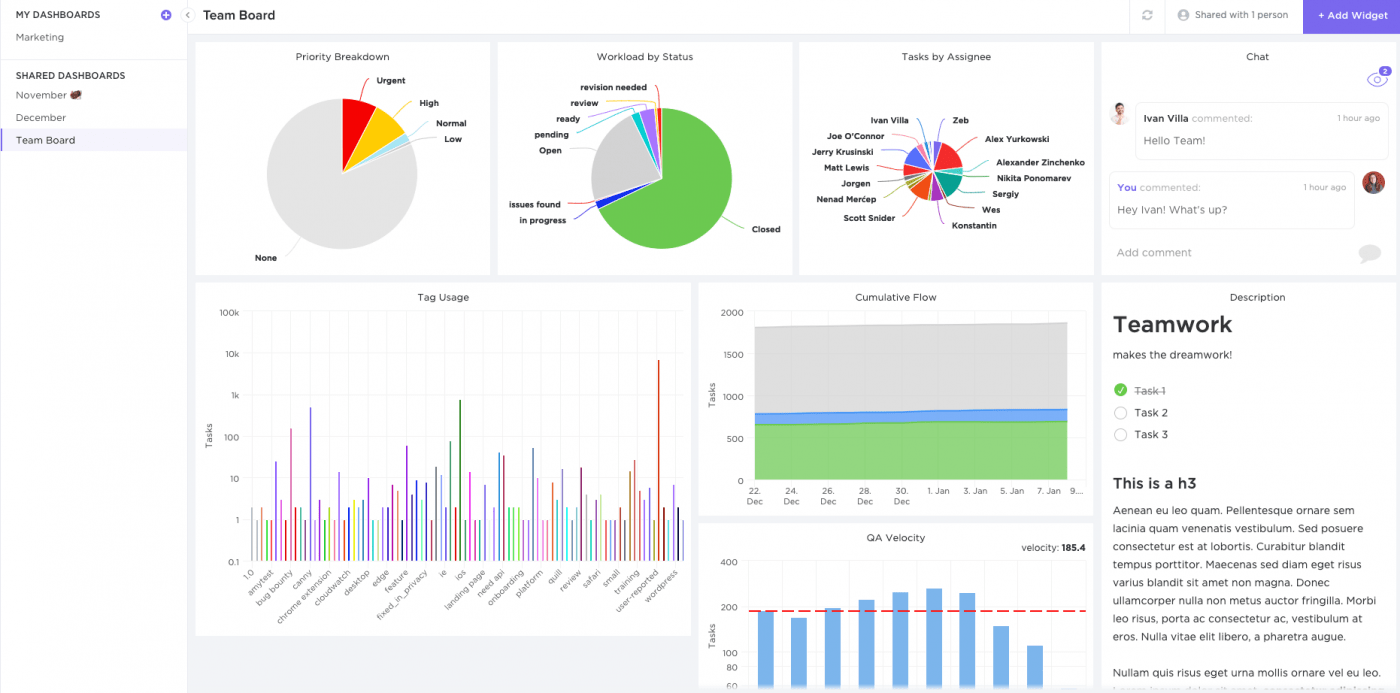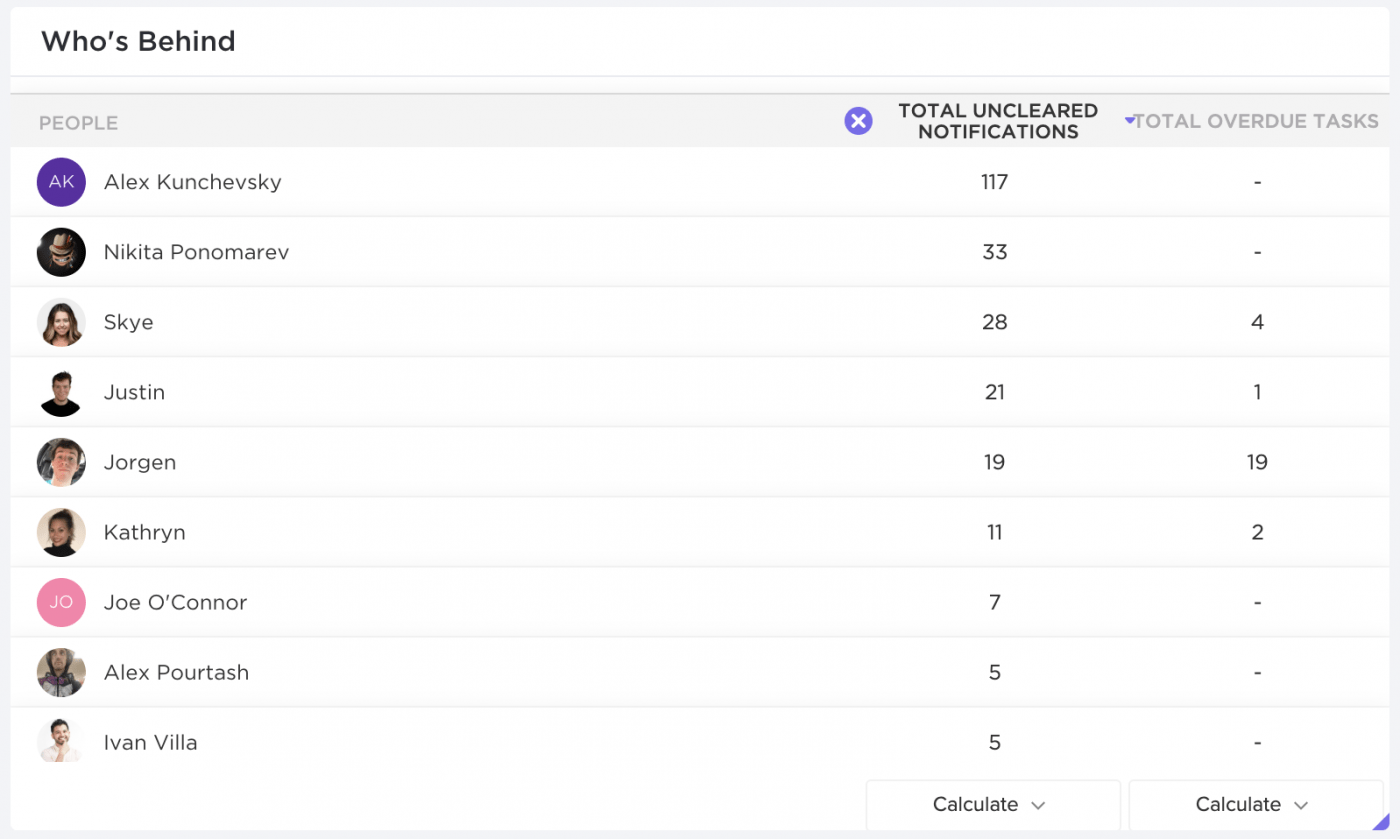

Choosing the right human resources KPIs is like hiring the best HR professionals.
What do we mean?
During the recruitment process, you want to select the people to lead your company to success, right?
Similarly, you need to select the right human resources KPIs that will get your company results.
But with tons of great HR KPIs out there, how do you know which ones you should be tracking?
Don’t worry!
In this article, we’ll go over everything you need to know about HR KPIs and take a look at the ten best KPIs and metrics you need to track today. We’ll also cover the easiest way to track KPIs for HR.
Let’s get down to business.
What Are HR KPIs?
First, let’s break down what KPI stands for:
KPI stands for Key Performance Indicator.
Key performance indicators are measurable metrics that show an organization if they’re achieving core business objectives. That’s why human resources KPIs must be used to track the performance of your HR activities.
Your human resources department is responsible for hiring and retaining the best talent, and without an HR KPI Dashboard to guide them on how well they’re doing, your employees (and even managers) might be confused.
10 HR KPIs & Metrics
To make your job easier, we’ve shortlisted ten human resources performance metrics and KPIs for you.
And to make this more comprehensive, we’ve also organized the KPIs into three different categories:
Recruitment KPIs
Recruitment is a crucial HR function, so of course, you need some recruitment KPIs.
Recruitment KPIs determine the effectiveness of your hiring process. They are the human resources metrics that help you reduce your recruitment costs and retain the best talent.
Here are some examples:
Cost per hire
This metric measures the average number of resources you’ve invested into hiring one employee.
Wait, what are resources?
Hiring resources include marketing and advertising expenses, the hiring process, and referrals.
A high cost per hire might mean that you need to improve specific areas in your recruitment process. By doing so, you can reduce your recruitment cost and improve your hiring process’s efficiency.
Here’s how you can calculate it:
Cost per hire =(Total internal recruiting costs + external recruiting costs + external recruiting costs) (Total # of hires in a given time frame)
Employee retention rate
The employee retention rate measures how well your company can keep your top performers motivated and engaged. This includes practices and strategies that aim to keep your employees happy, trained, and prepared so that they excel at their job.
For example, motivating them through recognition and awards. 🏆

This HR metric helps companies get insight into why top performers choose to stay at their company. This way, your organization can stay competitive with salaries and benefits when recruiting new employees.
Here’s how you can calculate it:
Top talent retention rate = Total number of employees – Total number of quitting employees Total number of employees
First-year turnover rate
Employee turnover measures how many employees you lose over a period of time.
The first-year turnover rate calculates the percentage of employees who resign less than one year of joining your organization.

The first-year turnover rate shows if you need to improve your hiring and onboarding processes since early resignations indicate a fundamental mismatch between a new hire and a company.
Here’s how you can calculate it:
First year turnover rate =Total number of employees who leave Number of employees who quit during the same period
Employee Engagement KPIs
Employee engagement KPIs help you determine if your organization is putting in the right policies to keep your employees engaged.
This includes adequate training, benefits, and a healthy work environment. These elements boost employee engagement and reduce turnover rates.
Let’s take a look at some performance indicators that will help you determine how engaged your employees are:
Employee satisfaction index
Employee satisfaction is an important KPI that measures how happy your employees are.
Why’s this important?
Keeping your employees happy and engaged reduces turnover rates.
But how do you know if your employees really love their job or just stick around for the paycheck? 🤨
You can determine employee satisfaction through online surveys, interviews, or informal conversations.
Net promoter score
Employee net promoter score gives you insight into how many employees would recommend your company as a place to work.
A simple way to do this is by asking employees to rank your organization from 0–10:
- 0–6 = Detractor ❎
- 7–10 = Promoter ✅
You can use surveys or interviews to find out why your detractors feel this way about your company. In doing so, your company can determine what might be lacking in the current work environment and reduce turnover rates.
Here’s how you can calculate it:
Net promoter score = % of promoters – % of detractors
Absenteeism rate
This HR KPI measures the amount of productivity lost due to your employees being sick, tired, or any other reason for absence. The absence rate can be applied to an individual, team, or the company as a whole.
Although a certain absenteeism level is normal, employees who continuously call in “sick” are a red flag. 🚩

It could mean that your employees lack motivation, are burnt out, or the work environment is unpleasant.
Here’s how you can calculate it:
Absenteeism rate = Total number of lost workdays due to absenceNumber of available workdays in an organization
The percentage of vacation days used
This employee KPI is all about a healthy work-life balance.
Your company should give employees a good number of days to go on holiday, relax, and well, let loose. #SunsOutBunsOut. ⛱

You should also encourage employees to use their vacation days since taking a break from work can boost employee productivity.
Here’s how you can calculate it:
The percentage of vacation days used =The number of vacation days usedThe number of unused vacation days x100
Compensation & Benefit KPIs
These performance indicators measure how much money and other resources your company invests in your employees. This includes salaries, training, incentives, and anything else with which you spoil your employees. 💁
These elements can help reduce employee turnover.
Let’s take a look at some of these:
Salary competitiveness ratio
You know how companies compete to attract customers?
Similarly, your HR department contests with other companies to attract the best talent.
Of course, offering an eye-catching salary package is one way to do it!
The salary competitiveness ratio is a measure of how competitive your company’s salaries are versus other companies that offer the same job roles.
A high salary competitiveness ratio gives your company a competitive edge over your competitors.
You know what they say: money talks. 🤑
Here’s how you can calculate it:
Salary competitiveness ratio = Salary offered by your company Salary offered by your competitor
Percentage of the cost of workforce
The percentage of the cost of the workforce should include money spent on salaries, training, recruitment costs, benefits, and bonuses.
You should also include any other costs like taxes, insurance, vacation pays, and overtime pays.
Remember, ideally, the more you invest in human capital, the more productive your employees will be.
The above KPI is essential for making decisions about salary increases, promotions, new hires, and training programs.
Why?
Well, unless you want to do this:

You should use the data from that metric to get insight into what you can spend on your employees.
Here’s how you can calculate it:
Percentage of cost of workforce = Cost of the workforce per month total operating costs of the company x100
Healthcare expense per current employee
This metric measures how much your company spends on healthcare plans for every employee.
After all, healthy employees are happy employees, right?
Offering a good healthcare plan will help your company attract and retain employees. But it’s also essential to make sure that your healthcare provider isn’t overcharging you.
If that’s the case, you can switch to a provider with lower rates or take on an even better healthcare plan!
Here’s how you can calculate it:
Healthcare expense per current employee = Total price of healthcare costs Total number of employees
Learn more about useful HR tools and tips that can help you make the whole process more effective.
How to Track HR KPI Metrics
Human resources KPIs determine if your HR department is reaching the organization’s overall HR objectives.
But how do you know if your HR department is making progress?
Let us ask you this:
Do you still track your HR metrics with Excel sheets?

If you do, please stop.
You need a powerful HR KPI tool with the right features.
And the best candidate for this job is ClickUp!
Let’s take a look at how ClickUp can help your HR team:
1. Set HR goals
Before you can start tracking anything, you need to set some HR Goals!
Goals are high-level containers that can be broken down into smaller, measurable Targets.

Targets are the objectives you need to reach to hit your human resources KPI.

Since KPIs are all about performance, ClickUp motivates you by showing you your KPI progress every step of the way. 👣
Every time you complete a Target, you’ll see how close you are to reaching your KPI.

You also get to customize the HR metrics you choose to track your KPIs, such as:
- Numbers: numerical figures such as cost per hire or training costs
- Currency: keep track of your money
- Tasks: check if your HR team is completing their HR duties

Confused about how KPIs differ from metrics? Here’s a post on the differences between KPIs and metrics.
2. Manage your HR KPIs
ClickUp’s Dashboards provide you with all the HR analytics you need to manage your KPIs.

A human resources Dashboard is your mission control center where hr managers can get a high-level overview of your HR team’s performance. 🚀
On top of that, you can choose how you want to view the data.
Here’s a list of some of the Custom Widgets you can add to your KPI dashboard:
- Line Chart: create a line chart with the data you choose 📈
- Bar Chart: create a custom bar chart with any data 📊
- Portfolio: categorize and track the progress of your HR processes
- Calculation: calculate sums, averages, and other numerical data
- Chat: have conversations with your team within your HR Dashboard

3. Track your HR team’s performance
When you hire an employee, you still need to track their performance to make sure they’re actually doing their job, right?
Similarly, you need to track the performance of your HR team regularly.
But how do you do this?
Simply add Table Widgets to your HR KPI Dashboard.
With these Widgets, you’ll have everything you need to visualize employee performance.
Here are some of the Widgets you’ll get:
- Completed Report: see how many tasks each team member has finished
- Worked On: know the number of tasks each member worked on a specific day, week, or month
- Workspace Points: gamify your HR activities so that you can identify the top performers 🎮
- Who’s Behind: determine which team members need to put in a little more effort by seeing the number of uncleared notifications and overdue tasks

Having access to these KPI reports is especially useful for remote teams.
Why?
You can quickly identify which team members aren’t really working from home.

Want more KPI examples? Here are 50+ KPI examples and a templates.
KPI FAQs
Here are the answers to some common HR KPI questions:
What Is An HR Balanced Scorecard?
A balanced scorecard (BSC) is a strategic planning tool that helps teams get a “balanced” visual of their performance.
A BSC lists down goals for four specific areas:
Financial goals
This includes reducing or managing HR costs, reducing lost time due to staff vacancies, and improving employee training.
Customer goals
HR departments have two customers: employees and department leaders.
Customer goals focus on what these two groups expect from the HR department.
For example, employees expect the HR team to promote company culture, and department leaders expect HR to hire the best talent.
Bonus: Talent management software!
Internal process goals
These include goals around hiring, training, shaping company culture, and improving communication.
For example, you can set up an internal company blog to communicate your company vision and share information between siloed teams.
Learning and growth goals
These goals are about how your HR department plans to develop a highly-trained team.
Your HR department should learn and grow to the point where they don’t require any training anymore!
Or in the words of Yoda:

Essentially, a BSC encourages your human resource team to focus on activities that support the company’s overall goals. In doing so, It showcases the value of your HR department.
Characteristics of Good HR KPIs
A useful human resource KPI has five attributes:
Simple
The KPIs you set should lead to actions, not more questions.
Complicated goals may confuse your HR team and cause delays in achieving those goals!
Setting straightforward KPIs ensures that your HR team knows exactly what’s expected of them.
Actionable
Your KPIs also need to be realistic.
Why?
Setting unachievable goals is highly demotivating for any team!
Relevant
Your HR KPI needs to be relevant to your HR strategy.
For example, let’s say you’re an HR manager, and your goal is to increase social media engagement.
That’s not ideal.
Why?
The goal doesn’t contribute to your role in the organization, nor does it further your career.
Measurable
Measurable goals have specific amounts, data, and timeframes.
For example:
Decrease our employee turnover rate by 20% by the second quarter.👌
Aligned
Your HR KPIs also need to align with the overarching business goal.
For example, an organization that focuses solely on customer service will prioritize customer retention goals over customer acquisition goals.
On top of these attributes, we also recommend using SMART goals! SMART goals are:
- Specific
- Measurable
- Attainable
- Relevant
- Time-bound
Keep these in mind when you’re creating your HR KPIs! 😊
Time To Onboard Some HR KPIs 🛥
Human resource metrics show you if you’re accomplishing all your HR objectives.
They’re the core performance indicators that every organization needs to track how their HR department is doing.
But merely choosing a KPI isn’t enough.
You need to track it too!
And to do this, you need a tool like ClickUp.
From letting you create custom employee onboarding Templates, HR templates, or publishing application Forms, ClickUp has everything you need to manage both your KPIs and the recruitment process.
Get ClickUp for free today, so your entire HR department knows exactly what to do and when to do it!




